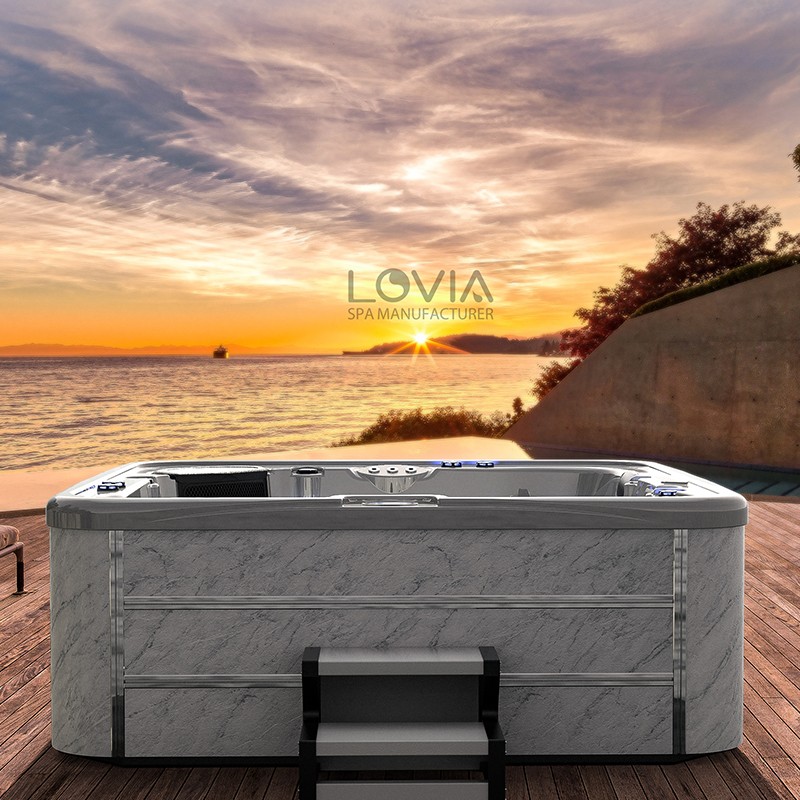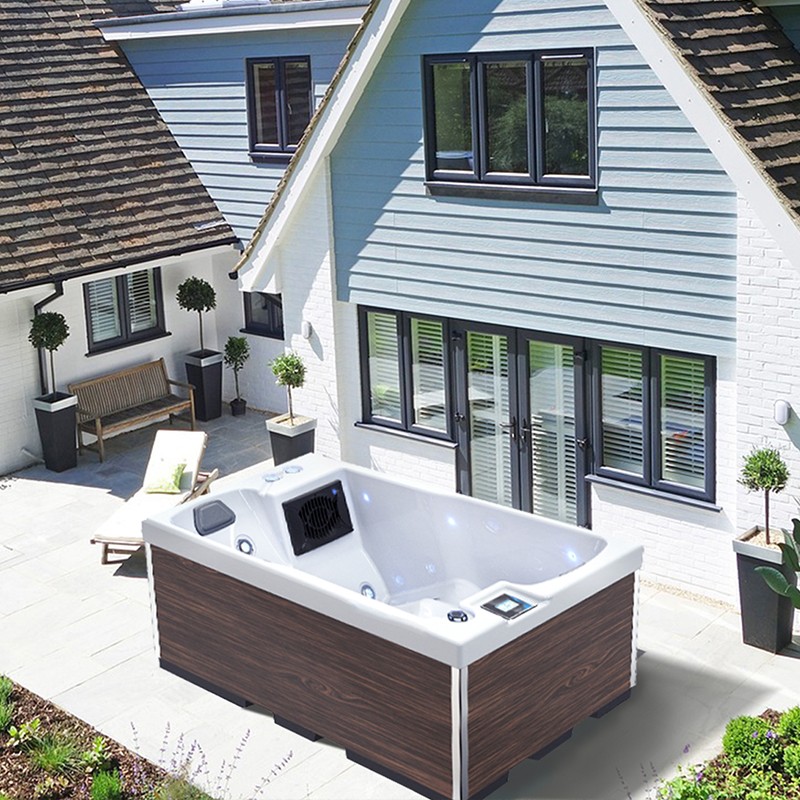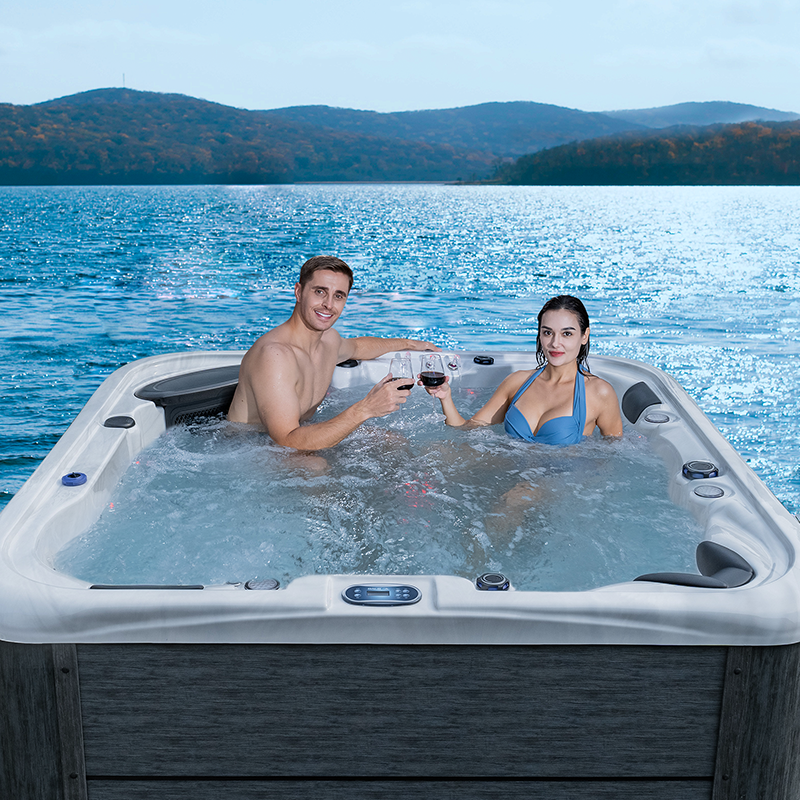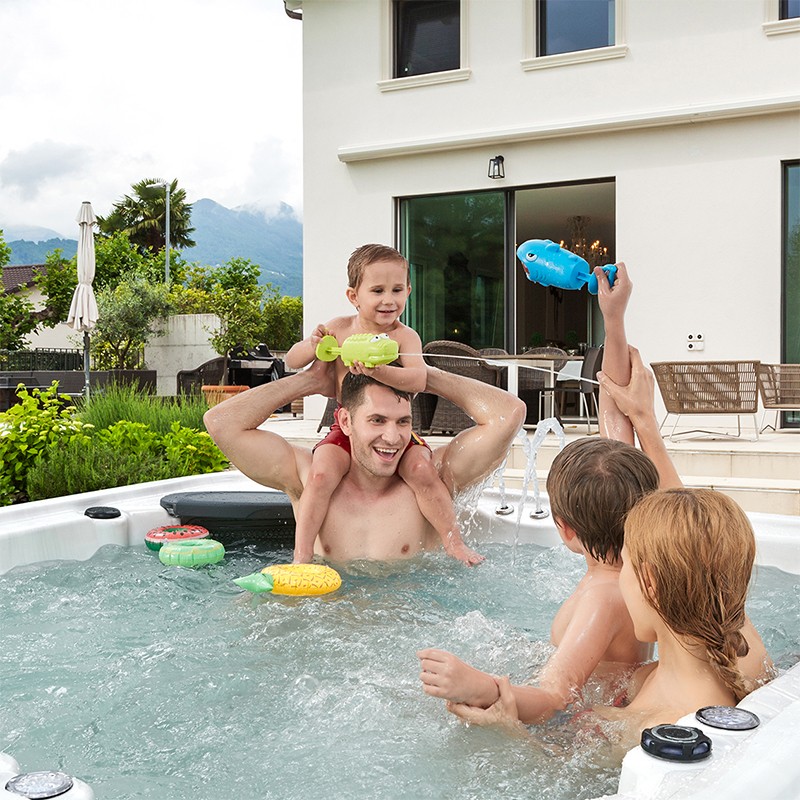
How often should spa hot tubs be tested for Legionella?
2025-10-29 15:30Spa hot tubs, widely used in high-end homes and commercial spaces, integrate heating, circulation, massage, and filtration systems, providing users with a warm and comfortable spa experience. However, with increasing frequency of use, spa hot tubs have become a potential breeding ground for microorganisms, particularly Legionella.
Thus, the question of "How often should whirlpool spa hot tubs be tested for Legionella? Is it really necessary?" has become a core issue in maintaining spa safety and hygiene.
This article will provide a professional analysis from multiple perspectives, including the biological characteristics of Legionella, the working environment of whirlpool spa hot tubs, public health standards, and testing methods and frequency. This will help users establish a scientific maintenance plan to ensure user health and safety.

Structural Characteristics of Spa Hot Tubs and Risks of Microbial Growth
1. Spa Hot Tub System Environment
The core functional systems of a spa hot tub include:
· Constant temperature heating device (typically maintained between 34°C and 40°C);
· Nozzles and bubble injection system;
· Circulation pump;
· Filter;
· Chemical disinfection management unit (such as chlorine, bromine, ozone, or UV germicidal lamp);
· Various PVC or acrylic liner structures.
Although this system is advanced in construction, its inherent design creates several conditions conducive to the growth of Legionella bacteria, including:
· Constant warm water temperature;
· Accumulation of proteinaceous organic matter;
· Piping systems that are difficult to completely clean;
· Localized stagnant or residual water areas;
· Spraying aerosols from the spray device, which facilitate the spread of Legionella bacteria.
2. Risks of Legionella in Spa Hot Tubs
Legionella is a waterborne Gram-negative bacillus. The most common pathogen is Legionnaires' disease. Its pathogenic mechanism is not through drinking water, but through inhalation of contaminated aerosols, which can infect the respiratory system. Symptoms include high fever, cough, muscle pain, and, in severe cases, death. Spa hot tubs are particularly dangerous because:
· The jets release bacterial aerosols into the air while releasing massage bubbles;
· Bathtubs are often shared by multiple people, further increasing the risk of cross-infection;
· Home users lack the professional maintenance systems of public places and are more likely to overlook water quality issues.

The Necessity of Testing for Legionella in Spa Hot Tubs
1. Is Testing Necessary?
From a public health perspective, regular testing is essential for any warm water equipment that can generate aerosols, especially whirlpool spa hot tubs. While there is no mandatory legal obligation for individual home users, Legionella testing is strongly recommended or even mandatory in the following scenarios:
· Commercial whirlpool spa hot tubs (such as hotels, spas, and gyms);
· Semi-public baths shared by multiple users;
· Baths used by individuals with compromised immune systems, the elderly, or those with chronic lung disease;
· Patients with a history of unidentified water-related infections.
2. What is the goal of testing?
The purpose of regular Legionella testing is not only to identify the source of contamination, but more importantly to:
· Evaluate the effectiveness of current chemical management measures;
· Identify dead spots in filtration and cleaning systems;
· Determine whether enhanced disinfection or system flushing is necessary;
· Prevent potential health incidents before unusual symptoms or complaints occur.

Recommended Frequency of Legionella Testing in Spa Hot Tubs
1. Professional Hygiene Standards
According to recommendations from multiple public health agencies (such as the US CDC, NSW Health in Australia, and the UK HSE), the frequency of Legionella testing in whirlpool spa hot tubs depends primarily on the nature of the facility's use and the level of exposure to the population.
Usage Scenarios | Recommended Testing Frequency |
| Private home use, weekly maintenance required | Test 1-2 times per year (recommended) |
| Shared use by multiple households, moderate maintenance required | Test every six months |
| Commercial spaces (hotels, gyms, spas) | Test monthly or quarterly (mandatory) |
| Reactivation after an epidemic or after a long period of inactivity | Test before use |
| Used by elderly or infirm individuals | Test quarterly for safety |
2. Indicators for Determining Whether Increased Testing Frequency is Necessary
In addition to the standard frequency, the following situations require immediate increase in testing frequency:
· Turbidity or an odor in the bathtub water;
· Slowing of the water flow rate in the circulation system;
· Unusual fluctuations in residual chemical concentrations;
· A history of unexplained respiratory symptoms in users;
· The spa hot tub has been unmaintained for an extended period;
· The system is being operated for the first time after a water source replacement.
Legionella Testing Methods and Procedures
1. Sample Collection Locations
When sampling in a whirlpool spa hot tub, it is recommended to select the following locations to represent the entire system:
· Showerhead outlet;
· Combined sample of the bathtub water surface and bottom;
· Samples from the pipes before and after the filtration system;
· Warm water section near the return line;
· If feasible, collect splash condensation samples that generate aerosols.
2. Detection Technology
Currently, there are three main detection methods available:
· Plate Culture Method: Requires 7-10 days and provides quantitative detection of viable bacterial concentrations;
· Polymerase Chain Reaction (PCR) Molecular Detection: Rapid, sensitive, and suitable for initial screening;
· ELISA: Suitable for on-site testing or commercial service agencies;
Traditional culture methods are the most reliable but time-consuming. It is recommended that they be used in conjunction with rapid methods to enable immediate maintenance decisions when necessary.

Legionella Prevention and Control Measures for Spa Hot Tubs
While regular testing is crucial, preventing the development of a breeding ground is paramount. The following are effective prevention and control measures:
1. Maintaining Proper Water Temperature
· The heating system should maintain a water temperature between 38°C and 40°C;
· Avoid prolonged standing at temperatures between 30°C and 35°C, as this is the temperature range where Legionella bacteria thrive;
· If not in use for an extended period, reduce the water temperature to room temperature or drain completely.
2. Regular Water Change
· It is recommended that home users completely change the water in their whirlpool spa hot tub every one to two months;
· Commercial facilities are advised to drain and flush the water every two weeks or monthly;
· Water changes are required after changing the water source or after water system renovations.
3. Chemical Treatment Management
· Continuously monitor free chlorine or bromine concentrations;
· Maintain a pH between 7.2 and 7.8 to enhance disinfectant effectiveness;
· It is recommended to use ozone or UV systems to enhance sterilization;
4. Piping System Cleaning
· Flush the whirlpool spa hot tub monthly with a specialized descaling agent;
· Disassemble and clean the showerhead assembly to prevent deposits;
· Clean the filter cartridge every one to two weeks and replace it quarterly.
Legionella testing in spa hot tubs is essential and should be performed regularly
In summary, Legionella is a dangerous bacteria that can rapidly multiply in the ideal warm water environment of a spa hot tub and can be spread through aerosols, causing serious respiratory illnesses. Because spa hot tubs have complex structures and operate through multiple high-temperature, circulating, and chemical processes, their internal microbial ecosystems require systematic management and testing.
Therefore, regarding the question, "How often should spa hot tubs be tested for Legionella?" the scientific conclusion is:
· Yes, testing is essential;
· Testing frequency should be tiered based on the location and population risk level;
· Testing and routine preventive maintenance should be performed simultaneously to build a healthy barrier for spa use.
What brands and components does LOVIA SPA use?
LOVIA SPA uses trusted brands such as Aristech for acrylic shells and Balboa and LX for pumps and electrical components. All components are certified CE, ETL, SAA, ROHS, REACH, and ISO9001, ensuring long-lasting performance.
Buyers seeking bulk purchasing, wholesale pricing, and customized spa solutions can request factory quotes and promotions. LOVIA SPA provides reliable, high-quality spa products suitable for personal, commercial, and retail use worldwide.
